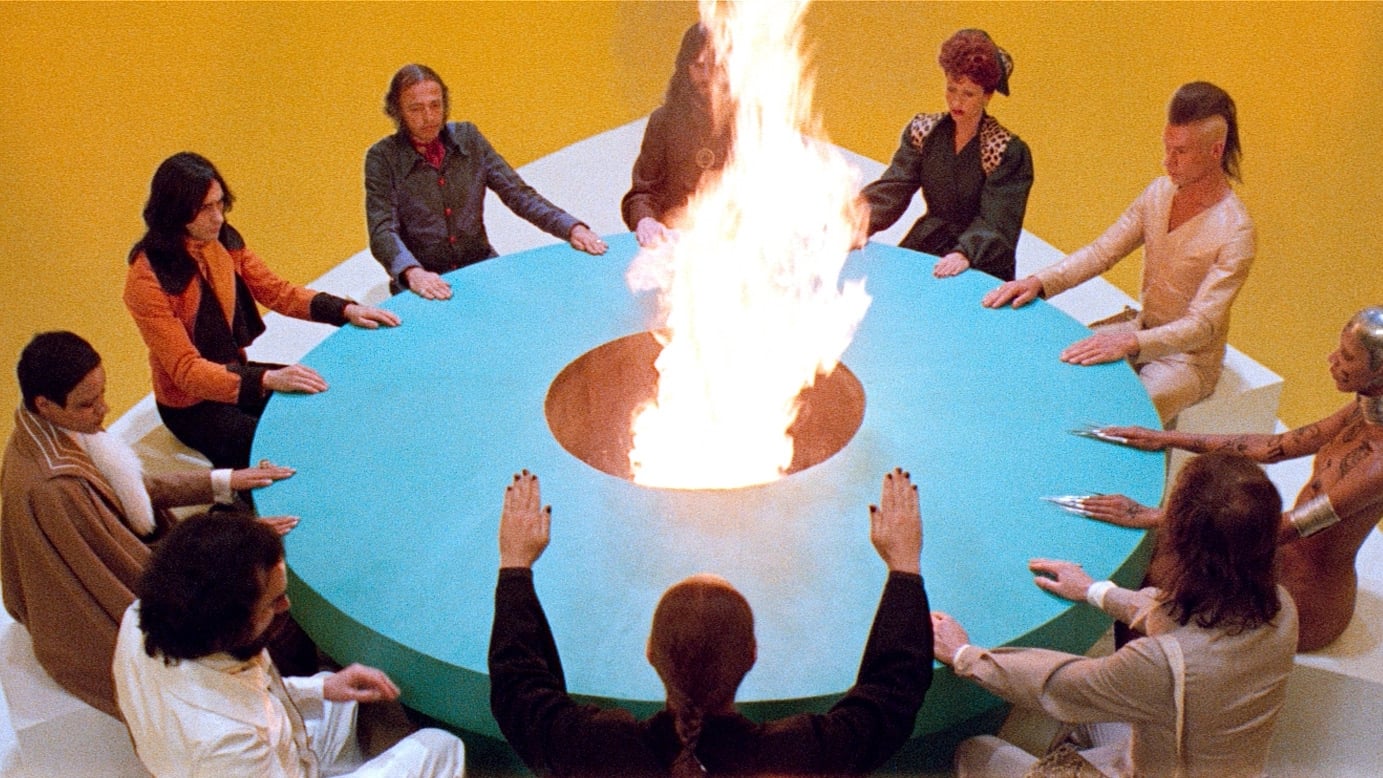The 3 Body Problem is one of the most intriguing puzzles in classical mechanics. At its core, it involves predicting the motion of three celestial bodies as they interact with one another through gravity.
Unlike simpler scenarios that involve just two bodies—like the Earth orbiting the Sun—the complexity escalates dramatically with three. The trajectories can become chaotic and unpredictable, making this problem a tantalizing challenge for physicists and mathematicians alike.
Historically, the implications of the 3 Body Problem reach far beyond mere academic curiosity. It has shaped our understanding of gravitational interactions and paved the way for advances in fields like astronomy and astrophysics.
Key figures such as Isaac Newton and Joseph-Louis Lagrange have delved into this enigma, contributing significant insights that continue to influence contemporary science. Yet despite centuries of study, answers remain elusive, sparking both excitement and frustration among those who dare to explore its depths.
Curious about why this phenomenon has fascinated minds throughout history? Join us as we unravel the layers of complexity surrounding the 3 Body Problem, its origins, and its profound impact on our comprehension of the cosmos.
The Origins of the Name.
The term “3 Body Problem” emerged in the late 17th century as physicists and mathematicians began to explore the complex interactions between multiple celestial bodies.
While Newton’s groundbreaking work with the law of universal gravitation laid the foundation for understanding two-body systems (such as a planet orbiting its star), it became apparent that adding even a third body significantly complicates predictions about motion.
The specific phrase came into common usage following these early explorations, expressing the problem’s complexity more succinctly than previous descriptions.
In the years leading up to this nomenclature, thinkers such as Isaac Newton were initially focused on simpler scenarios. Newton’s laws allowed for precise calculations involving two bodies; however, any attempt to account for a third seemed insurmountable.
This realization wasn’t far behind when mathematicians started expanding their studies beyond binary interactions. Figures like Joseph-Louis Lagrange began to delve deeper into what was necessary to make sense of gravitational forces acting on three mutually influencing masses.
Their efforts laid crucial groundwork but also revealed intriguing challenges—the equations quickly spiraled into profound intricacies that would defy straightforward solutions.
As scholars navigated through various approximations and numerical methods, they labeled these endeavors simply based on how many masses they involved, hence “n-body problems,” which eventually led specifically to the focus on three distinct entities—the essence captured by “3 Body Problem.”
Among mathematical discussions and analytic strategies forged during these early explorations were rudimentary techniques akin today’s computational simulations.
These burgeoning ideas fostered an acknowledgment that while we could directly measure gravitational pulls among several objects in theory, accurately predicting their behaviors over time posed monumental challenges.
Overall, the name encapsulates not just a mathematical challenge but also symbolizes humanity’s struggle against chaos and unpredictability in nature itself—an ongoing journey fueled by curiosity and a thirst for understanding fundamental forces at play in our universe.
As history has shown us since then, grappling with complexity is intrinsic to scientific advancement, making terms like “3 Body Problem” resonant reminders of both our limits and potential within physics.
What Is the 3 Body Problem?
The 3 Body Problem is a fascinating scenario in classical mechanics that explores the intricate dance of three gravitationally interacting bodies. Imagine three celestial objects, such as planets or stars, each exerting gravitational forces on one another.
As these bodies move through space, their paths are influenced by the collective gravitational interactions, leading to complex and often chaotic motion.
Unlike simpler two-body systems — where predictions about motion can be precisely calculated using Newton’s law of gravitation — adding even one more body introduces an exponential level of complexity and unpredictability.
To understand why this is the case, consider how gravity works with just two bodies: take Earth and the Moon, for example. Their interaction can be easily modeled; you simply apply Newton’s laws to determine their orbital paths.
However, when a third body is introduced — let’s say a hypothetical asteroid between them — predicting the movements becomes much harder. The presence of this additional mass alters the gravitational field felt by both Earth and Moon, creating new variables and potential outcomes that cannot be definitively solved analytically.
This means that any small change in initial conditions can lead to vastly different results over time, showcasing what’s known as sensitivity to initial conditions — a hallmark of chaotic systems.
Mathematically speaking, while the equations governing two-body interactions are solvable with elegance and grace (think Kepler’s laws), the moment we shift our focus to three bodies interacting simultaneously, those neat solutions dissolve into a realm characterized by non-linear equations that defy simple resolution.
This inherent chaos implies that rather than yielding closed-form solutions, scientists relying on mathematical predictions must often revert to computational methods or simulations for insight into such dynamic scenarios.
The intricacy extends beyond theoretical ramifications; understanding the 3 Body Problem has real-world implications for fields like astrophysics and celestial mechanics.
When planning space missions or calculating satellite trajectories in Earth’s orbit affected by other celestial influences — like other satellites or even gravity from nearby celestial bodies — scientists must account for these complex interactions.
Ultimately, this challenge not only cultivates deep curiosity among physicists but also inspires innovative approaches in technology and mathematics as we strive to unravel nature’s beautifully intricate tapestry of gravitational relationship dynamics.
Historical Context.
The 3 Body Problem has a rich historical tapestry woven with the contributions of some of the most brilliant minds in physics and mathematics. One of the earliest figures to tackle gravitational interactions was Sir Isaac Newton, whose groundbreaking work on universal gravitation laid the foundation for classical mechanics.
In his seminal book, “Philosophiæ Naturalis Principia Mathematica,” published in 1687, Newton established principles that would allow for the analysis of two-body systems rather well, such as Earth and the moon or planets orbiting the sun.
However, when additional bodies entered into these calculations, predicting their motions became exponentially more difficult. Newton himself acknowledged that while he could describe how two celestial objects influence each other, introducing a third would complicate matters significantly.
Fast forward to the 18th century and we see Joseph-Louis Lagrange stepping onto this stage with innovative mathematical solutions. Lagrange made significant strides by applying calculus to celestial mechanics, particularly developing what is known today as Lagrangian mechanics.
His exploration allowed for somewhat refined predictions about multiple body systems but still fell short of producing generalized solutions for three-body interactions.
Lagrange famously identified five specific configurations where three bodies could maintain stable positions relative to one another—today known as Lagrange points—but these are merely special cases in an otherwise chaotic system.
Despite these early contributions, many aspects of the 3 Body Problem remain unsolved and continue to spark debate among scientists and mathematicians alike.
One key realization was made in the late 19th century with Henri Poincaré’s work regarding dynamical systems; he introduced ideas about chaos theory that unveiled just how unpredictable three-body dynamics could be over time, implying sensitivity to initial conditions.
This understanding led him to demonstrate that no general solution exists for all possible configurations of three bodies under mutual gravitational attraction—a revelation that continues to tantalize those in astrophysical research.
Throughout history, the journey through this intricate problem has yet to yield comprehensive answers; instead, it highlights not only humanity’s intellectual pursuit but also our humble position amidst the cosmos’ chaotic dance of celestial bodies.
From Newton’s foundational laws to modern computational approaches seeking approximations and simulations driving space exploration today, the evolution surrounding the 3 Body Problem enriches our understanding while shining light on formidable mysteries still remaining within our universe.
Mathematical Complexity.
The complexity of the 3 Body Problem arises from its inherent unpredictability when three bodies interact gravitationally. In a two-body system, such as Earth and the Moon, the motion can be described with precise mathematical equations that result in predictable orbits.
The orbits are stable and repeatable due to the simplicity of the interactions involved. However, when a third body is introduced—say, a spacecraft moving between these two celestial bodies—the situation transforms dramatically.
Instead of simpler celestial mechanics, we face an intricate tapestry of forces at play, leading to highly sensitive dependencies on initial conditions. Even minuscule changes can yield wildly different trajectories, making long-term predictions nearly impossible.
At the heart of this mathematical dilemma lies chaos theory—a branch of mathematics that explores how tiny variations in system conditions can lead to vastly different outcomes.
In the context of the 3 Body Problem, solutions often become chaotic, expressing themselves in strange attractors where paths oscillate rather than converge towards stability.
For instance, consider three stars in a binary star system; small perturbations caused by changing distances lead to complex dance-like motions that no simple formula accurately calculates over time. As such, mathematicians have created various approximations and numerical methods to glean insights without finding exact solutions.
Fundamentally, describing motion within these complex systems involves extensive use of differential equations governed by Newton’s laws of motion and universal gravitation: F = ma (force equals mass times acceleration) and F = G(m1m2/r²) (the law of universal gravitation).
When extending these principles into three dimensions for three bodies interacting simultaneously, one quickly finds themselves mired in an ocean of calculations involving factors like relative velocity and directed distance—all compounded by their interdependencies.
These equations grow unwieldy rapidly, illustrating why predicting trajectories requires advanced computational models rather than mere pencil-and-paper arithmetic.
Consequently, modern physicists employ sophisticated computer simulations and numerical analysis techniques to visualize what would otherwise remain abstract concepts—integrating concepts such as N-body simulations or symplectic integrators specifically tailored for multibody problems.
What was initially relegated to theoretical musings has transformed through technology into dynamic explorations of cosmic movement influenced not just by gravity but also timeliness in various orbital mechanics scenarios—capturing the romantic essence underlying our efforts to decode nature’s complexity while demystifying bewildering phenomena across our universe.
Real-World Applications.
The complexities of the 3 Body Problem reach far beyond theoretical musings in classrooms and research labs—its implications play a significant role in modern astrophysics and practical applications.
For instance, when launching satellites into orbit, mission planners must consider not just the gravitational interactions between Earth and the satellite but also account for other celestial bodies like the Moon and Sun.
These additional forces can alter a satellite’s trajectory, potentially leading to disastrous consequences if neglected. Thus, insights from studying the 3 Body Problem are essential in ensuring precise orbital mechanics, thereby enhancing satellite life cycles and operational functionality.
Furthermore, space missions venturing beyond our planet rely heavily on solutions derived from the 3 Body Problem to navigate complex gravitational environments. Missions to Mars or even interstellar probes like Voyager require intricate calculations that incorporate interactions among multiple celestial bodies.
The gravity assist maneuver, which leverages the gravitational pull of nearby planets to accelerate spacecraft without expending fuel, is a perfect example of how understanding these dynamics can expand mission capabilities while conserving resources.
Each twist and turn around these massive entities offers an opportunity to illustrate how fundamental physics intertwines with ambitious explorations.
In addition to interplanetary travel and satellite management, research into the 3 Body Problem contributes significantly to understanding chaotic systems in various scientific fields.
Scientists studying astrodynamics often apply models drawn from this problem to phenomena encountered in weather patterns or population dynamics where multiple variables interact nonlinearly.
This crossover showcases not just its relevance in astrophysics but highlights its broader applicability across different scientific disciplines—illustrating that complexity often breeds innovation across sectors.
Ultimately, grappling with the intricacies of the 3 Body Problem doesn’t merely provide academic insight; it has real-world repercussions that impact technology we rely on every day—from navigation systems that guide your GPS device to exploratory missions that push the boundaries of our knowledge about the universe.
Its study serves as a reminder that our understanding of gravitational interactions shapes how we explore both our solar system and fundamental principles governing numerous physical processes on Earth.
Modern Computational Approaches.
In the contemporary landscape of physics and astronomy, technological advancements have revolutionized our ability to tackle the 3 Body Problem. Traditionally, this intricate problem stymied great minds due to its chaotic nature and lack of analytical solutions.
However, with the rise of powerful computers and sophisticated algorithms, scientists can now simulate the complex interactions between multiple celestial bodies in ways that were previously unimaginable.
High-performance computing allows for extensive numerical simulations that not only enhance our understanding but also make precise predictions about gravitational dynamics in various scenarios—be it planetary orbits or interstellar phenomena.
A key player in solving the 3 Body Problem today is software like MATLAB and Python’s SciPy library, which facilitate complex calculations through their robust computational capabilities.
These tools enable researchers to model the gravitational forces acting on three (or more) bodies by employing techniques such as numerical integration. For instance, one might use these tools to simulate how a spacecraft navigates around multiple planets or how stars in a binary system interact over time.
The flexibility and openness of platforms like Python foster collaboration among scientists across fields, allowing them to refine their approaches based on current findings.
Moreover, specialized astrophysical simulation programs such as REBOUND have emerged, designed explicitly for studying N-body problems—an extension of the 3 Body Problem where N refers to any number of interacting bodies.
Such programs utilize an algorithmic approach called symplectic integrators that preserve certain mathematical properties crucial for long-term accuracy when simulating dynamical systems.
This enables researchers to conduct detailed studies of cosmic events, including predicting potential collisions between celestial entities and exploring orbital stability in complex multi-body systems.
As we embrace collaborative platforms for research and innovative computational methods, our understanding of complicated scientific issues continues to expand.
By applying modern technology toward unraveling the mysteries posed by the 3 Body Problem, scientists are not just making strides within academic circles; they are also contributing vital knowledge relevant to real-world applications ranging from satellite trajectory planning to understanding gravitational waves produced by merging galaxies.
In essence, today’s computational approaches transform what was once considered an insurmountable challenge into a fascinating playground for scientific exploration.
Cultural References.
The 3 Body Problem, with its inherent complexity and mystery, has transcended the realm of science and found a prominent place in popular culture. Its exploration of chaotic interactions among celestial bodies resonates with themes of uncertainty and conflict that can be applied to various aspects of human experience.
Notably, Liu Cixin’s acclaimed “The Three-Body Problem” trilogy dives deep into the implications these gravitational challenges present on both cosmic and societal scales.
Through its imaginative narrative, the series examines how humanity might react when confronting an alien civilization from a three-body system—the perfect allegory for unpredictability within our universe.
In addition to literature, references to the 3 Body Problem have also appeared in films and TV shows, albeit often indirectly. For instance, many sci-fi dramas contemplate multidimensional spaces where character fates are akin to navigating interlocking gravitational fields.
This philosophical representation mirrors real scientific quandaries—evoking questions about free will versus determinism as well as the intricate dance of interacting forces shaping our realities. Such portrayals ignite curiosity about astronomy among audiences who may not have encountered the topic otherwise.
The discussion surrounding the 3 Body Problem has even made its way into popular science forums and conferences, where enthusiasts gather to share insights on this perplexing challenge.
Many science communicators emphasize the beauty that stems from unraveling its complexities; they argue that understanding chaos theory deepens our appreciation for both physics and mathematical elegance.
Events dedicated to bridging science with culture reveal stories shared by researchers regarding their encounters with this elusive problem—transforming academia into accessible narratives that can spark interest across generations.
Overall, cultural references serve as conduits making complex scientific concepts relatable to wider audiences. By engaging through literature, film, or community discourse, we glimpse how something as abstract as celestial mechanics can evoke profound reflections on humanity’s quest for knowledge and our place within this vast universe.
The allure of the 3 Body Problem illustrates not just an academic puzzle but also a mirror reflecting deeper existential inquiries awaiting exploration—encouraging us all to ponder life’s mysteries together.
The Ongoing Mystery.
The 3 Body Problem continues to captivate scientists and enthusiasts alike. Despite centuries of study, it remains a complex puzzle within classical mechanics. The interactions between three celestial bodies are far from straightforward.
They showcase the beautiful intricacies of gravitational forces that govern our universe. Each new discovery adds depth to our understanding while revealing how much we still have left to learn.
This enduring enigma invites all of us to appreciate the elegance behind such complexity. As we delve deeper into the mysteries of space, let’s remember that every challenge—like the 3 Body Problem—offers clues about our cosmos. Curiosity fuels exploration, encouraging us to seek answers in a world that is both wondrous and intricate. You may also read >>>> What Are Humanity’s Greatest Challenges in 3 Body Problem?

I am a highly experienced film and media person who has a great deal to offer to like-minded individuals. Currently working on several exciting projects, I am a film and media practitioner for over a decade. I have achieved a great deal of success in my professional career.





